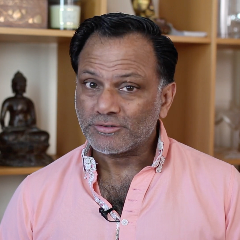You are not currently logged in. Please create an account or log in to view the full course.
Understanding Faces
- About
- Transcript
- Cite
Facial Processing and Recognition
In this course, Dr Ashok Jansari (Goldsmiths, University of London) explores the process of face recognition. In the first lecture, we think about what makes a face special as a visual stimulus. In the second lecture, we think about what information a face conveys, including identity and emotions. In the third lecture, we think about why human faces are special and explore some facial interpretations, such as a face inversion effect. Next, we think about prosopagnosia, aphantasia and super-recognition abilities. In the fifth and final lecture, we think about some current research on facial recognition, including its implementation in law enforcement and surveillance.
Understanding Faces
In this lecture, we think about what makes a face special as a visual stimulus, focusing in particular on: (i) the face acting as a key form of identity in humans; (ii) the function of a face to communicate feelings to others; (iii) Johnson and colleagues’ study, which assessed the facial recognition abilities of newborn babies; (iv) research evidence which indicates towards there being a specialised brain region which is dedicated to recognising faces.
Cite this Lecture
APA style
Jansari, A. (2022, June 09). Facial Processing and Recognition - Understanding Faces [Video]. MASSOLIT. https://massolit.io/courses/facial-processing-and-recognition/prosopagnosia-aphantasia-and-super-recognition
MLA style
Jansari, A. "Facial Processing and Recognition – Understanding Faces." MASSOLIT, uploaded by MASSOLIT, 09 Jun 2022, https://massolit.io/courses/facial-processing-and-recognition/prosopagnosia-aphantasia-and-super-recognition

